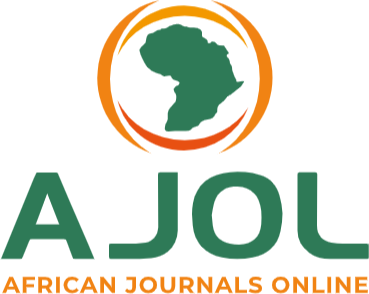Money growth and inflation rate: evidence from Angola from 2014 to 2023
DOI:
https://doi.org/10.4314/academicus.v2i2.3Palavras-chave:
money growth, money supply, inflation, VAR, time-varying analysisResumo
This paper investigates the impact of the money supply on inflation in Angola from 2014 to 2023, by assessing the effect of money supply on inflation in Angola and to examine how the effects of money growth on inflation rate has evolved over time. For this purpose, we use money aggregate M2, and national price index data published by Banco Nacional de Angola (BNA, hereafter), that it is analysed using Vector Autoregressive model (VARM, hereafter) and rolling VARM. The results suggest that firstly, money supply does affect inflation in Angola and its impact is positive, in other words, a 1% increase in money supply leads inflation to rise by 0.11%. Thus, the greater the money supply the greater the inflation. Secondly, money supply and past inflation may explain nearly 67% of current inflation in Angola. Third, the time-varying elasticity of inflation rate with respect to money supply has changed dramatically over time and its value per period is mostly positive, confirming that throughout the period money growth affect constantly inflation. These findings have considerable implications for the role of monetary policy in the short term to control inflation rate in Angola once it reinforces the views to BNA deliver a discretionary monetary policy during the periods of increase in government activity.
Referências
Asteriou, D. & Hall, S. 2011. Applied Econometrics. 2nd Edition, Palgrave Macmillan.
Balcilar, M., Gupta, R. & Miller, S. M. (2013). Regime switching model of US crude oil and stock market prices: 1859 to 2013. Energy Economics. 49(2015), 317-327.
Banco Nacional de Angola. (2023). Consulta de dados. [Online]. https://www.bna.ao/#/pt/estatisticas/consultar-dados
Bozkurt, C. (2014). Money, inflation, and growth relationship: the Turkish case. International Journal of Economics and Financial Issues, 4(2), 309-322.
Borio, C., Hofmann, B. & Zakrajsek, E. (2023). Does money growth help explain the recent inflation surge? BIS Bulletin (67)
Evans, O. (2019). Money, Inflation and Output in Nigeria and South Africa: Could Friedman and Schwartz Be Right? Journal of African Business, 20(3).
Fontana, G. & Setterfield, M. (2009). Macroeconomics, endogenous money and the contemporary financial crisis: a teaching model. International Journal of Pluralism and Economics Education, 1(2), 30 - 147. https://dx.doi.org/10.1504/IJPEE.2009.028970
International Monetary Fund. (2023a). Angola IMF office in Angola. Latest High Frequency Macroeconomic Data. [Online]. https://www.imf.org/en/Countries/ResRep/AGO.
International Monetary Fund. (2023b). World economic outlook database. [Online]
Government of Angola, Ministério das Finanças. (2022). Relatório de Fundamentação do OGE 2023.
Mahmoud, E. (1984). Accuracy in forecasting: a survey. Journal of Forecasting, (3), 139-59.
Mbongo, J. E., Mutasa, F. & Msigwa, R. E. (2014) The Effects of Money Supply on Inflation in Tanzania. Economics. 3(2), 19-26. https://dx.doi.org/10.11648/j.eco.20140302.11
McNees, S. 1986. Forecasting accuracy of alternativa techniques: a comparison of US macroeconomics forecasts. Journal of Business and Economic Statistics, (4), 5-15.
Mpofu, R. T. (2011). Money supply, interest rate, exchange rate and oil price influence on inflation in south Africa. Corporate Ownership & Control 8(3), Continued – 6.
Papadia, F., & Cadamuro, L. (2021). Does money growth tell us anything about inflation? Working Paper (11), Bruegel.
Roshan, S. A. (2014). Inflation and money supply growth in Iran: empirical evidence from cointegration and causality. Iran Econ. Rev. 18(1).
Roffia, B., & Zaghini, A. (2007). Excess money growth and inflation dynamics. Working Paper Series (749), European Central Bank.
Sieron, A. (2019). Endogenous versus exogenous money: does the debate really matter? Research in Economics, 73(4), 29-338. https://dx.doi.org/10.1016/j.rie.2019.10.003 1090-9443
Sainani KL. (2012) Dealing with non-normal data. American Academy of Physical Medicine and Rehabilitation. 4(12), 1001-1005. https://dx.doi.org/10.1016/j.pmrj.2012.10.013
Thwaini, F. H. & Hamdam, A. A. (2017). Money supply. Endogenous or exogenous variable with reference to Iraq. Banks and Bank Systems, 12(4) https://dx.doi.org/10.21511/bbs.12(4-1).2017.03
Tobin. (1970). Money and income: Post Hoc Ergo Propter Hoc? Quarterly Journal of economics, (84).
Zivot, E., Andrews, D., (1992). Further evidence on the great crash, the oil-price shock, and the unit-root hypothesis. Journal of Business Economic Statistics (10), 251–270. https://doi.org/10.2307/1391541 .
Downloads
Publicado
Como Citar
Edição
Seção
Licença
Copyright (c) 2024 Academicus Magazine

Este trabalho está licenciado sob uma licença Creative Commons Attribution-NonCommercial-NoDerivatives 4.0 International License.





















